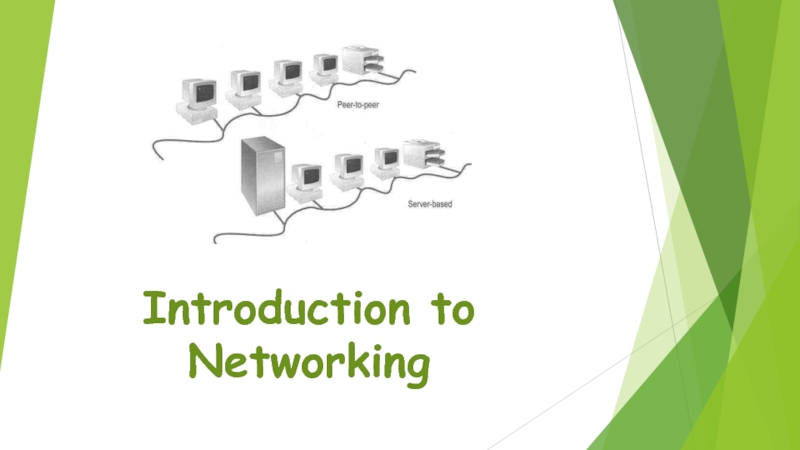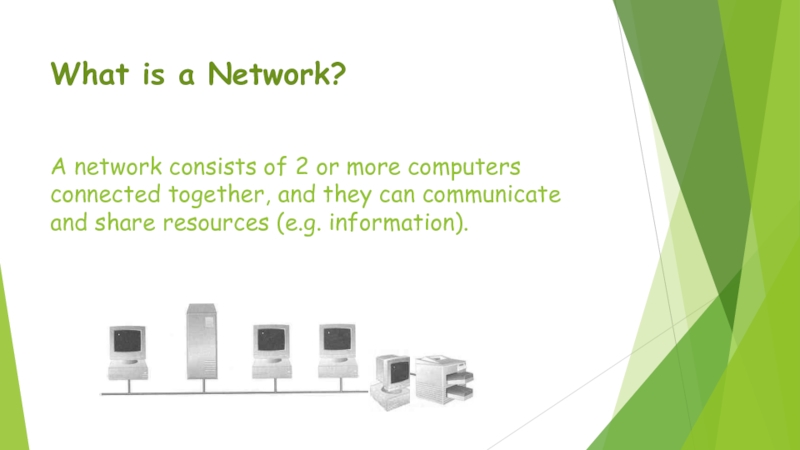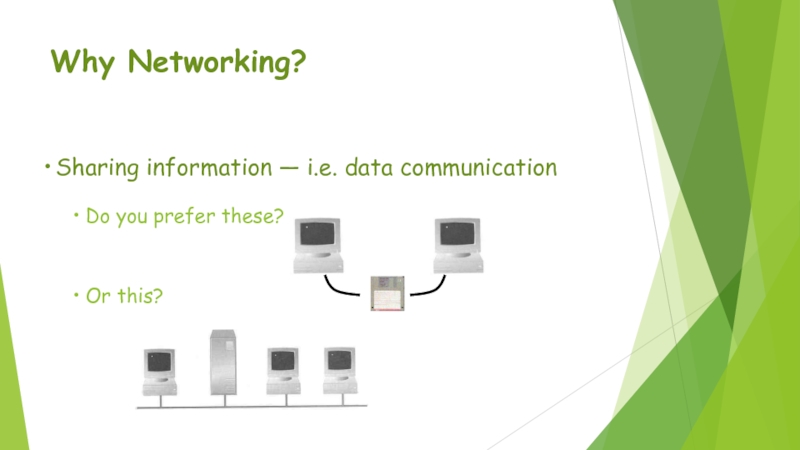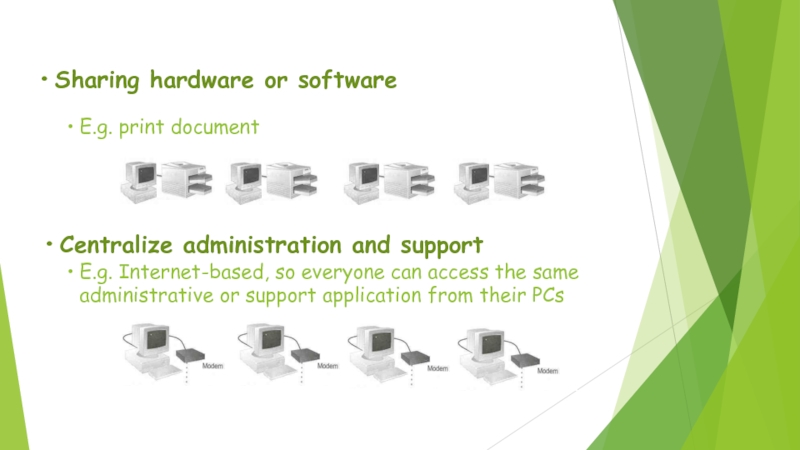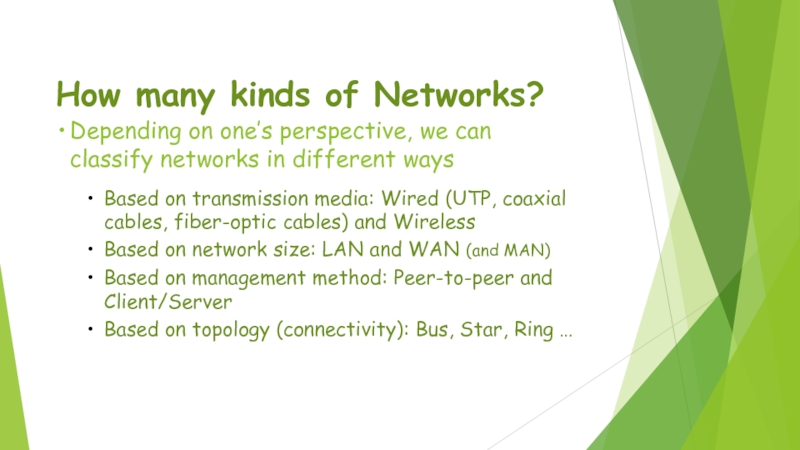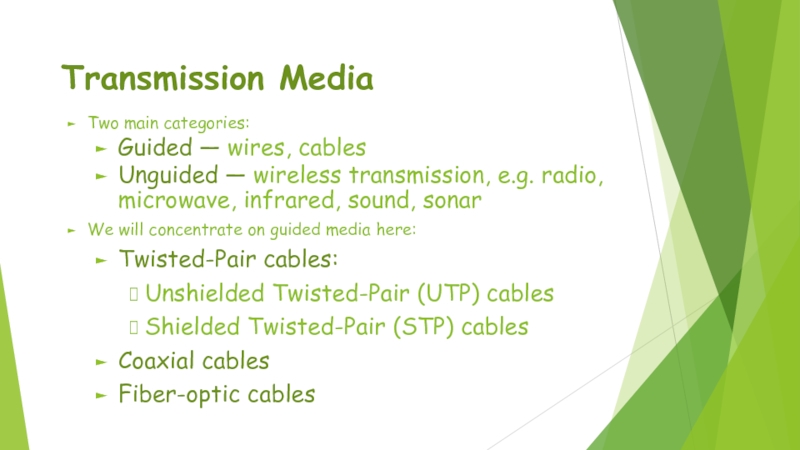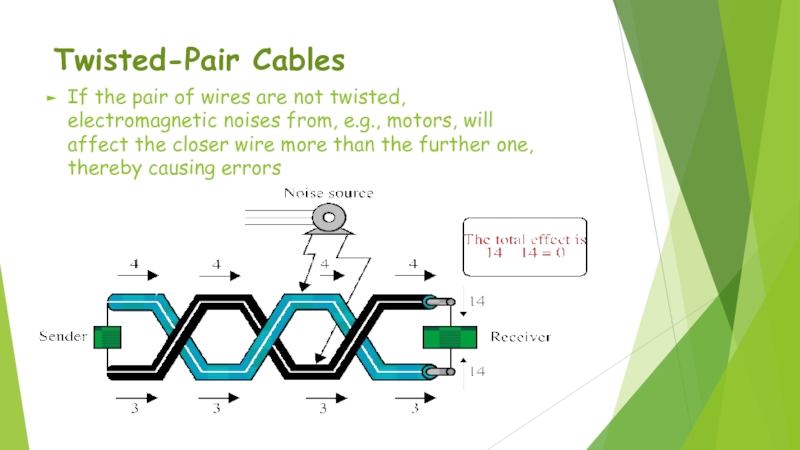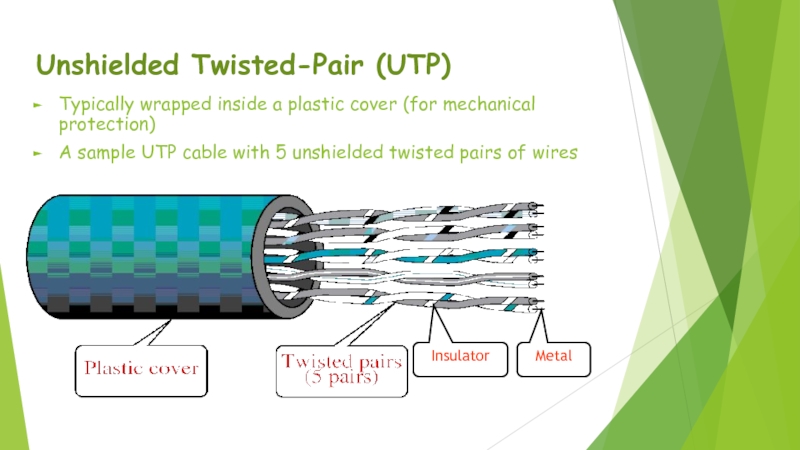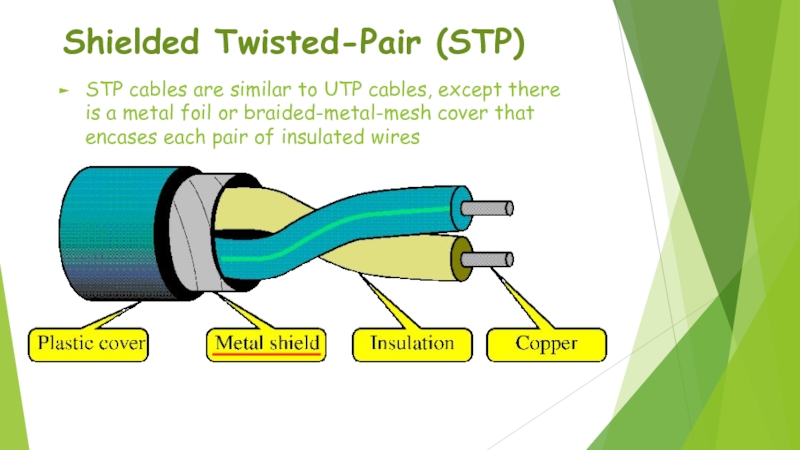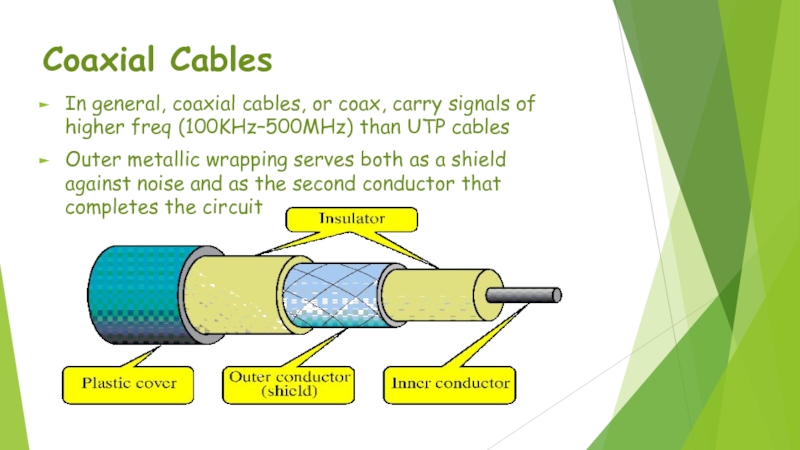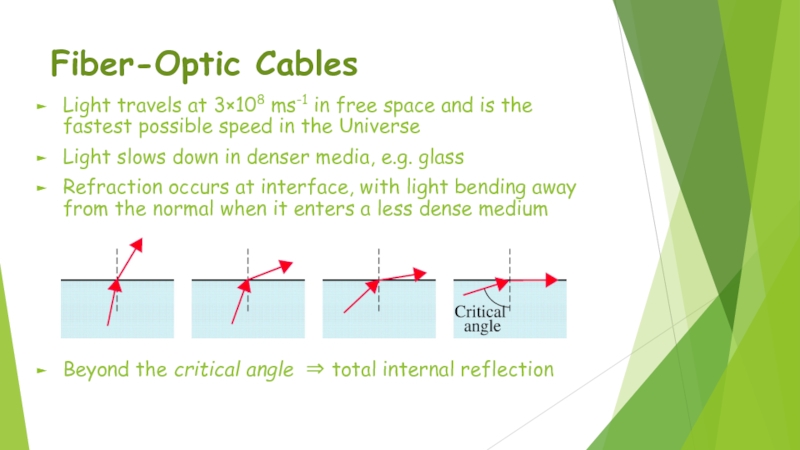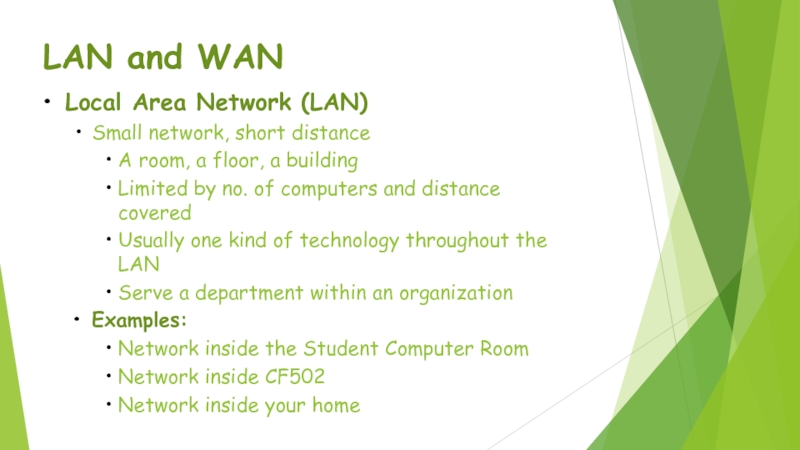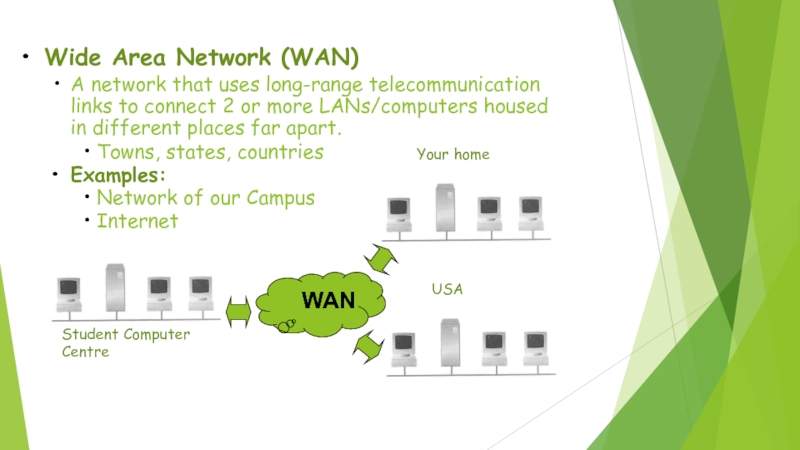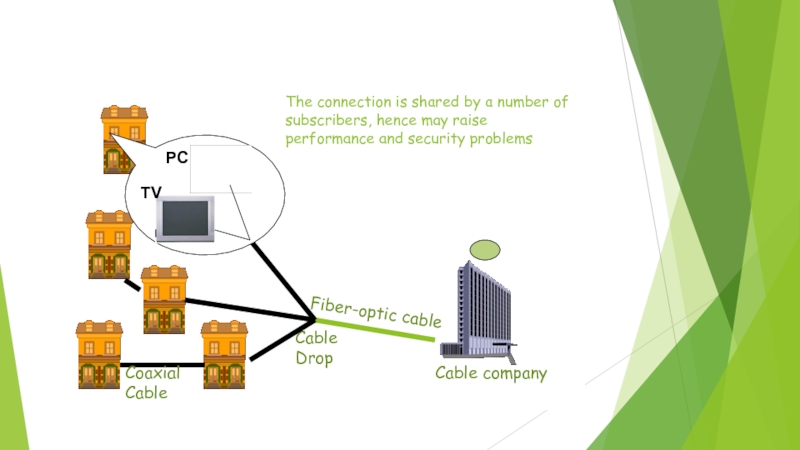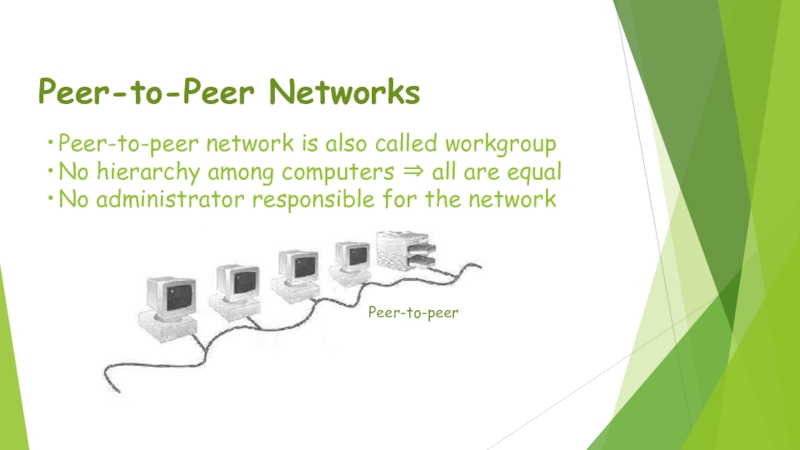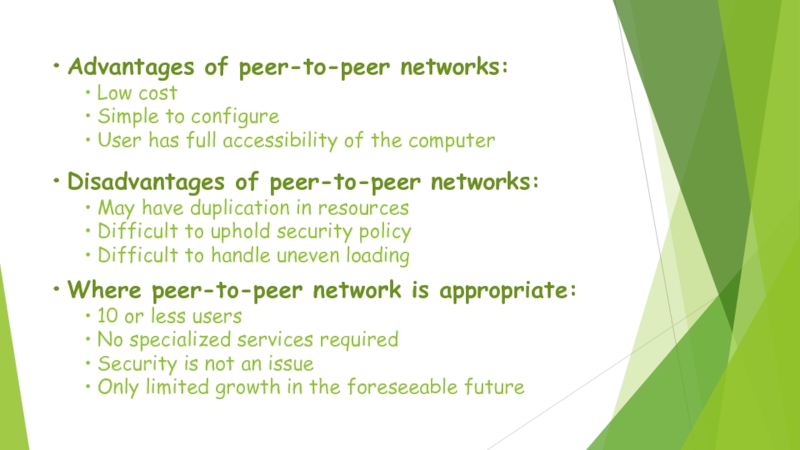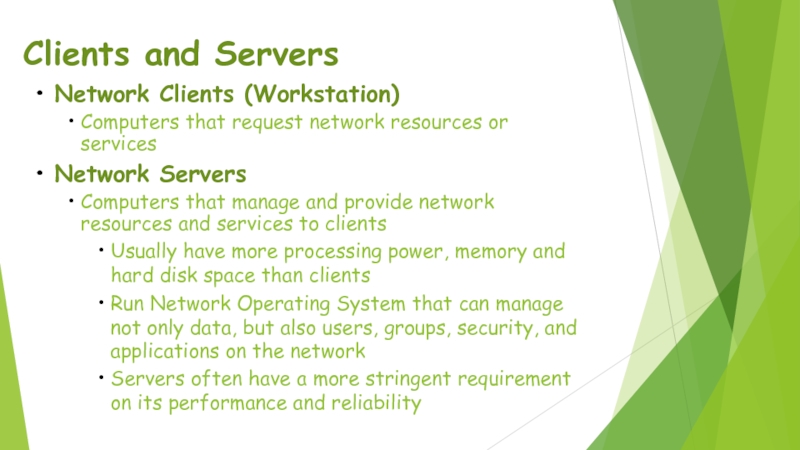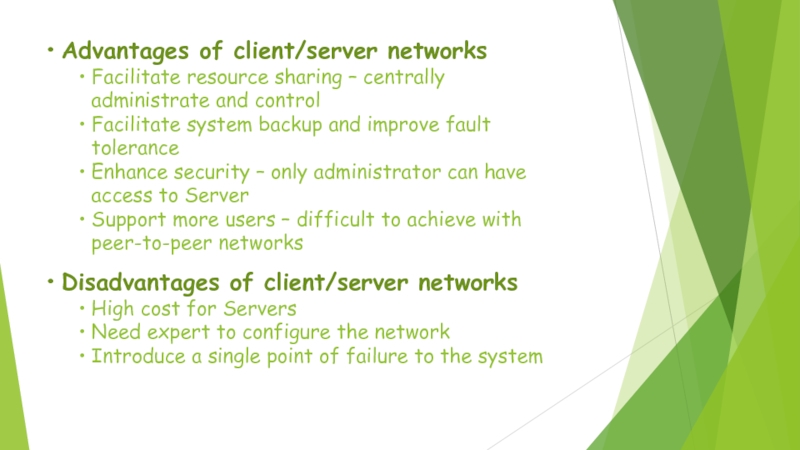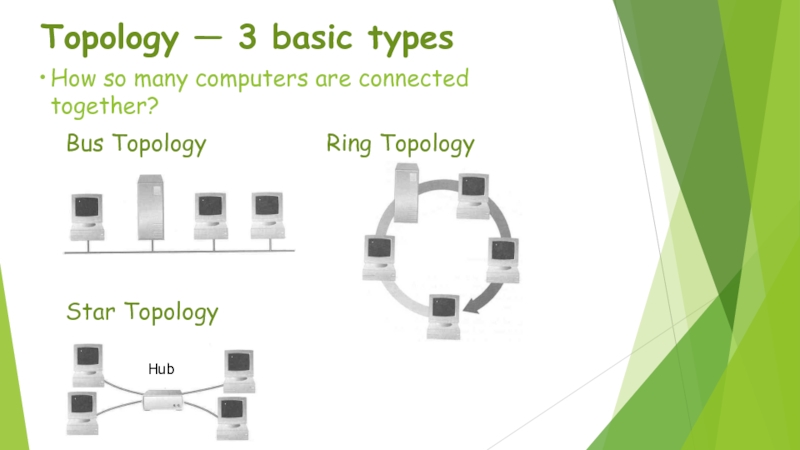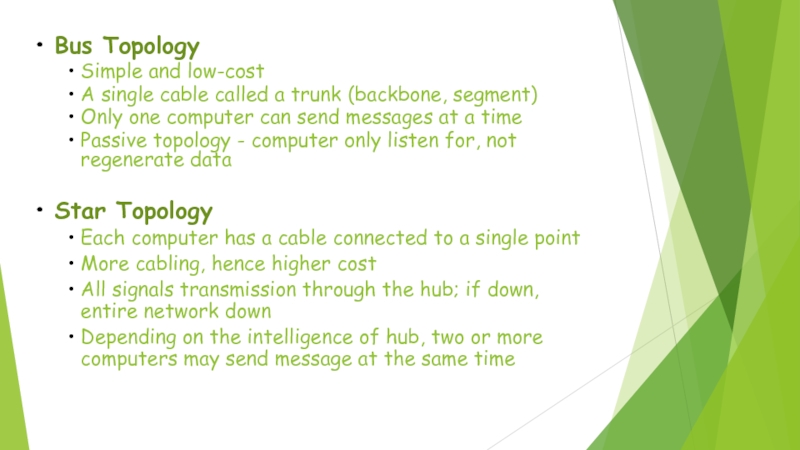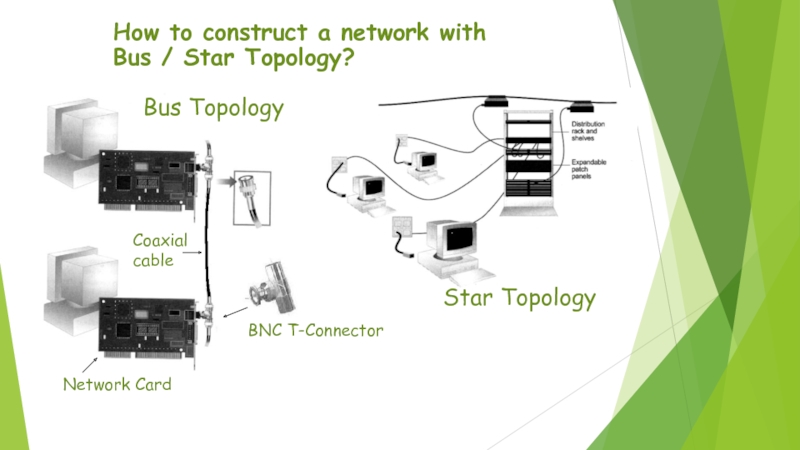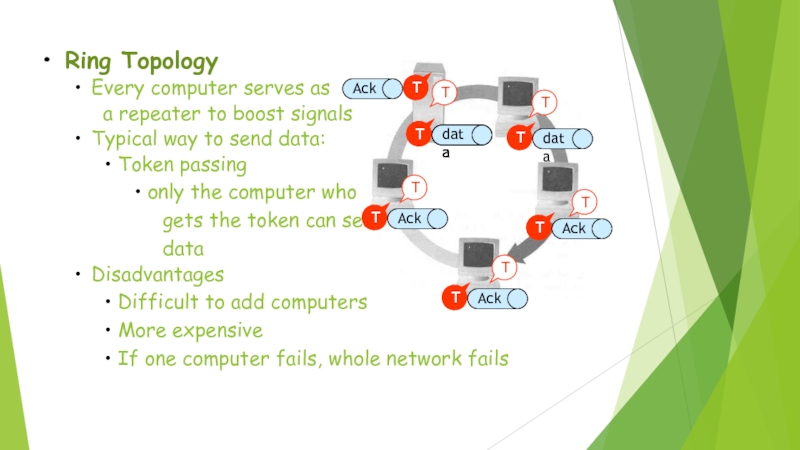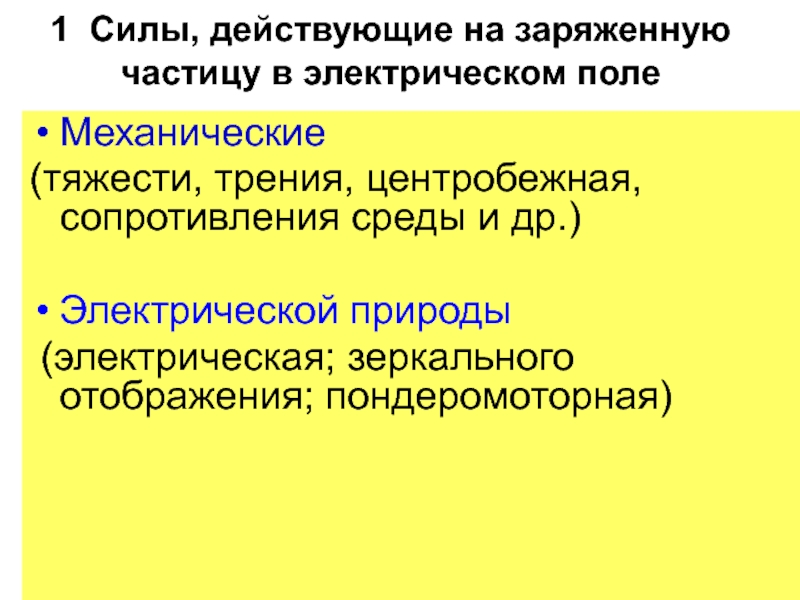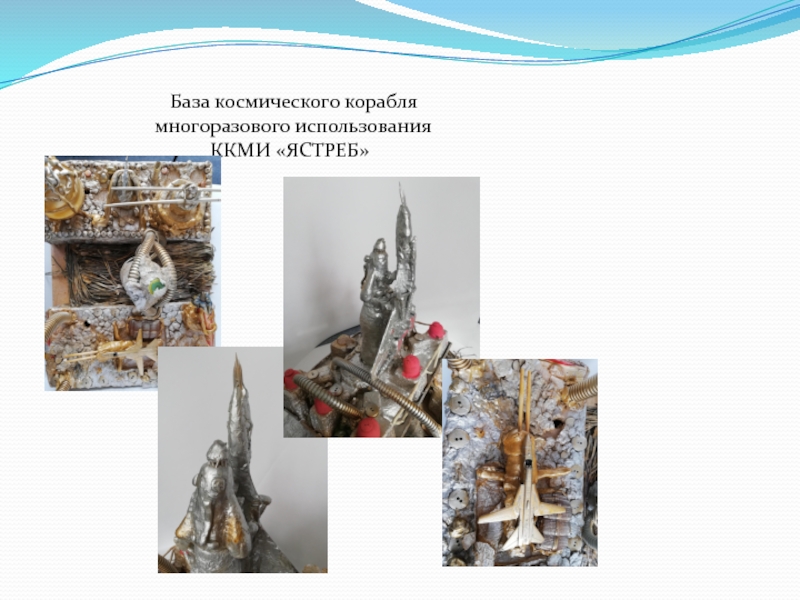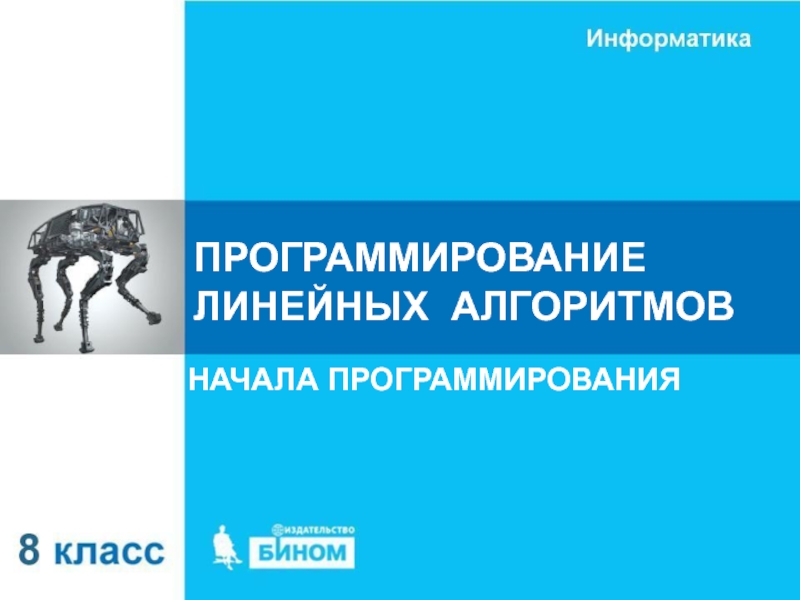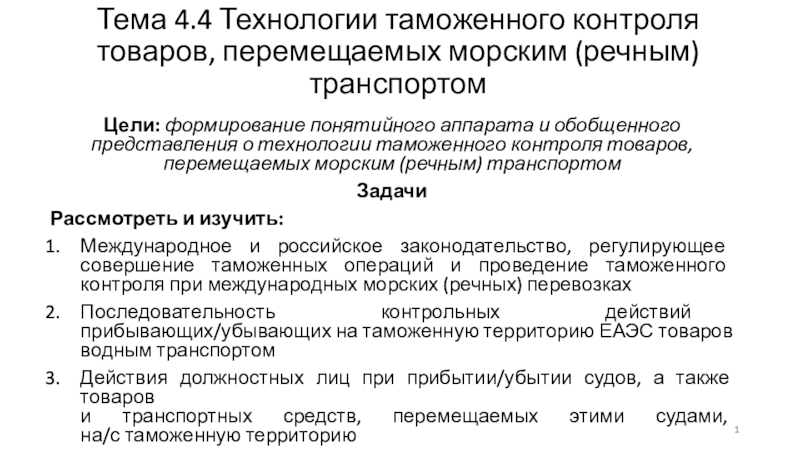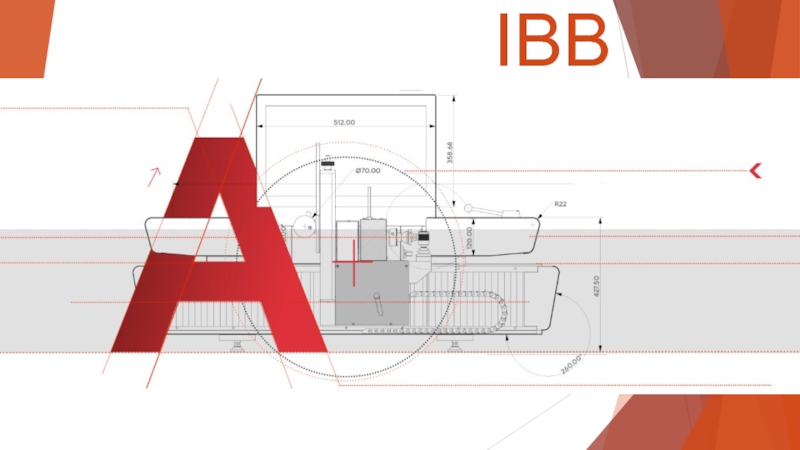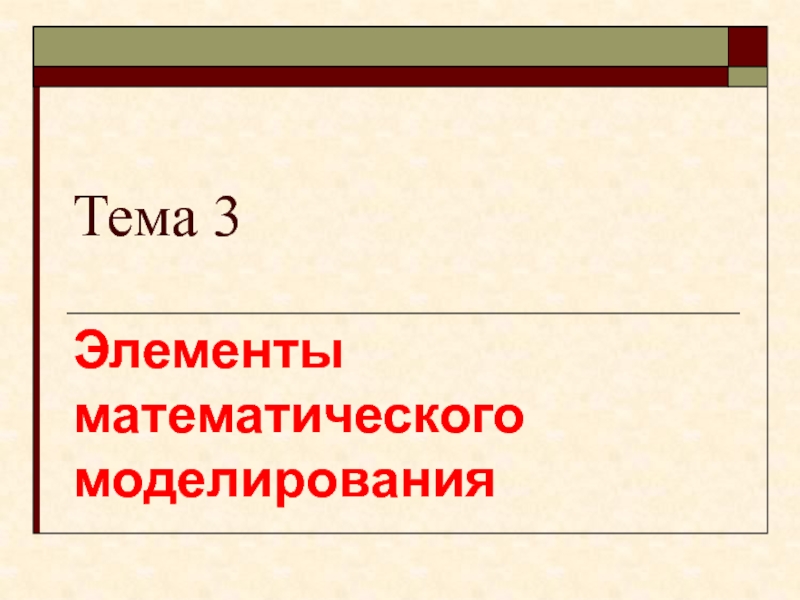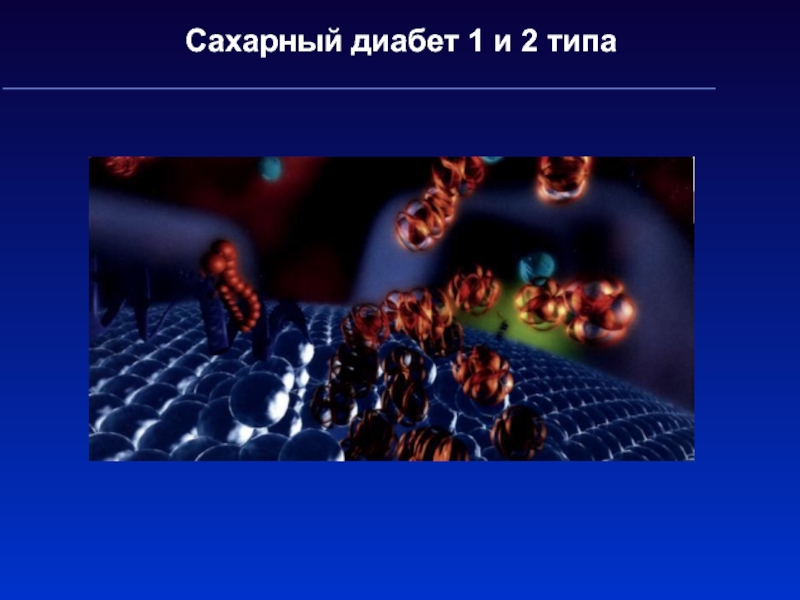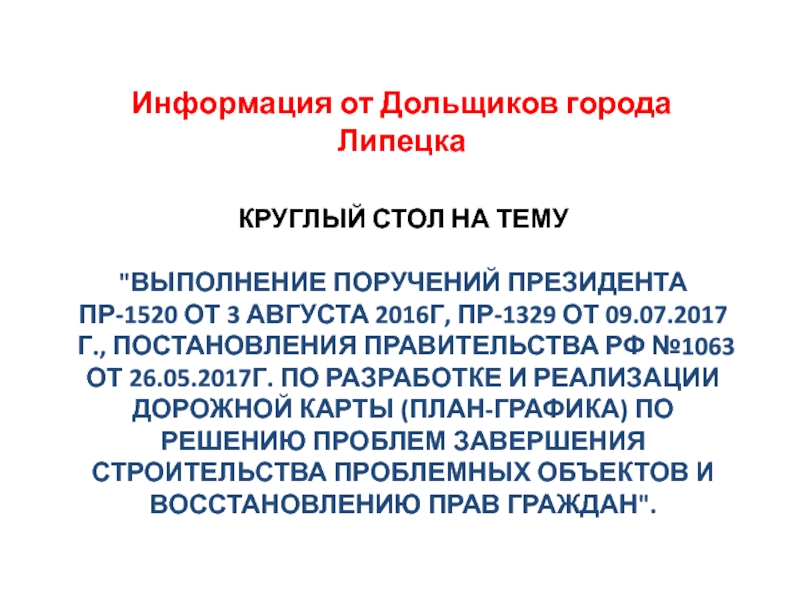Разделы презентаций
- Разное
- Английский язык
- Астрономия
- Алгебра
- Биология
- География
- Геометрия
- Детские презентации
- Информатика
- История
- Литература
- Математика
- Медицина
- Менеджмент
- Музыка
- МХК
- Немецкий язык
- ОБЖ
- Обществознание
- Окружающий мир
- Педагогика
- Русский язык
- Технология
- Физика
- Философия
- Химия
- Шаблоны, картинки для презентаций
- Экология
- Экономика
- Юриспруденция
Introduction to Networking
Содержание
- 1. Introduction to Networking
- 2. What is a Network?A network consists of
- 3. Why Networking? Sharing information — i.e. data communicationDo you prefer these?Or this?
- 4. Sharing hardware or softwareCentralize administration and supportE.g.
- 5. How many kinds of Networks? Depending on one’s
- 6. Two main categories:Guided ― wires, cablesUnguided ―
- 7. If the pair of wires are not
- 8. Unshielded Twisted-Pair (UTP) Typically wrapped inside a
- 9. Shielded Twisted-Pair (STP)STP cables are similar to
- 10. Coaxial CablesIn general, coaxial cables, or coax,
- 11. Fiber-Optic CablesLight travels at 3108 ms-1
- 12. LAN and WAN Local Area Network (LAN)Small network,
- 13. Wide Area Network (WAN)A network that uses
- 14. The connection is shared by a number
- 15. Peer-to-Peer NetworksPeer-to-peer network is also called workgroupNo
- 16. Advantages of peer-to-peer networks:Low costSimple to configureUser
- 17. Clients and Servers Network Clients (Workstation)Computers that request
- 18. Advantages of client/server networksFacilitate resource sharing –
- 19. Topology ― 3 basic types How so many computers are connected together?Bus Topology Ring Topology Star Topology
- 20. Bus TopologySimple and low-costA single cable called
- 21. How to construct a network with Bus / Star Topology?Star TopologyBus TopologyBNC T-ConnectorCoaxial cableNetwork Card
- 22. Ring TopologyEvery computer serves as a repeater to
- 23. Thanks for your attention
- 24. Скачать презентанцию
Слайды и текст этой презентации
Слайд 4Sharing hardware or software
Centralize administration and support
E.g. print document
E.g. Internet-based,
so everyone can access the same administrative or support application
from their PCsСлайд 5How many kinds of Networks?
Depending on one’s perspective, we can
classify networks in different ways
Based on transmission media: Wired (UTP,
coaxial cables, fiber-optic cables) and Wireless Based on network size: LAN and WAN (and MAN)
Based on management method: Peer-to-peer and Client/Server
Based on topology (connectivity): Bus, Star, Ring …
Слайд 6Two main categories:
Guided ― wires, cables
Unguided ― wireless transmission, e.g.
radio, microwave, infrared, sound, sonar
We will concentrate on guided media
here:Twisted-Pair cables:
Unshielded Twisted-Pair (UTP) cables
Shielded Twisted-Pair (STP) cables
Coaxial cables
Fiber-optic cables
Transmission Media
Слайд 7If the pair of wires are not twisted, electromagnetic noises
from, e.g., motors, will affect the closer wire more than
the further one, thereby causing errorsTwisted-Pair Cables
Слайд 8Unshielded Twisted-Pair (UTP)
Typically wrapped inside a plastic cover (for
mechanical protection)
A sample UTP cable with 5 unshielded twisted pairs
of wiresСлайд 9Shielded Twisted-Pair (STP)
STP cables are similar to UTP cables, except
there is a metal foil or braided-metal-mesh cover that encases
each pair of insulated wiresСлайд 10Coaxial Cables
In general, coaxial cables, or coax, carry signals of
higher freq (100KHz–500MHz) than UTP cables
Outer metallic wrapping serves both
as a shield against noise and as the second conductor that completes the circuitСлайд 11 Fiber-Optic Cables
Light travels at 3108 ms-1 in free space
and is the fastest possible speed in the Universe
Light slows
down in denser media, e.g. glassRefraction occurs at interface, with light bending away from the normal when it enters a less dense medium
Beyond the critical angle total internal reflection
Слайд 12LAN and WAN
Local Area Network (LAN)
Small network, short distance
A room,
a floor, a building
Limited by no. of computers and distance
coveredUsually one kind of technology throughout the LAN
Serve a department within an organization
Examples:
Network inside the Student Computer Room
Network inside CF502
Network inside your home
Слайд 13Wide Area Network (WAN)
A network that uses long-range telecommunication links
to connect 2 or more LANs/computers housed in different places
far apart.Towns, states, countries
Examples:
Network of our Campus
Internet
WAN
Student Computer Centre
Your home
USA
Слайд 14The connection is shared by a number of subscribers, hence
may raise performance and security problems
Fiber-optic cable
Cable company
Coaxial
Cable
TV
PC
Cable Drop
Слайд 15Peer-to-Peer Networks
Peer-to-peer network is also called workgroup
No hierarchy among computers
all are equal
No administrator responsible for the network
Peer-to-peer
Слайд 16Advantages of peer-to-peer networks:
Low cost
Simple to configure
User has full accessibility
of the computer
Disadvantages of peer-to-peer networks:
May have duplication in resources
Difficult
to uphold security policyDifficult to handle uneven loading
Where peer-to-peer network is appropriate:
10 or less users
No specialized services required
Security is not an issue
Only limited growth in the foreseeable future
Слайд 17Clients and Servers
Network Clients (Workstation)
Computers that request network resources or
services
Network Servers
Computers that manage and provide network resources and services
to clientsUsually have more processing power, memory and hard disk space than clients
Run Network Operating System that can manage not only data, but also users, groups, security, and applications on the network
Servers often have a more stringent requirement on its performance and reliability
Слайд 18Advantages of client/server networks
Facilitate resource sharing – centrally administrate and
control
Facilitate system backup and improve fault tolerance
Enhance security – only
administrator can have access to ServerSupport more users – difficult to achieve with peer-to-peer networks
Disadvantages of client/server networks
High cost for Servers
Need expert to configure the network
Introduce a single point of failure to the system
Слайд 19Topology ― 3 basic types
How so many computers are connected
together?
Bus Topology Ring Topology
Star Topology
Слайд 20Bus Topology
Simple and low-cost
A single cable called a trunk (backbone,
segment)
Only one computer can send messages at a time
Passive topology
- computer only listen for, not regenerate dataStar Topology
Each computer has a cable connected to a single point
More cabling, hence higher cost
All signals transmission through the hub; if down, entire network down
Depending on the intelligence of hub, two or more computers may send message at the same time
Слайд 21How to construct a network with Bus / Star Topology?
Star
Topology
Bus Topology
BNC T-Connector
Coaxial cable
Network Card
Слайд 22Ring Topology
Every computer serves as
a repeater to boost signals
Typical way
to send data:
Token passing
only the computer who
gets the
token can send data
Disadvantages
Difficult to add computers
More expensive
If one computer fails, whole network fails
T
T
